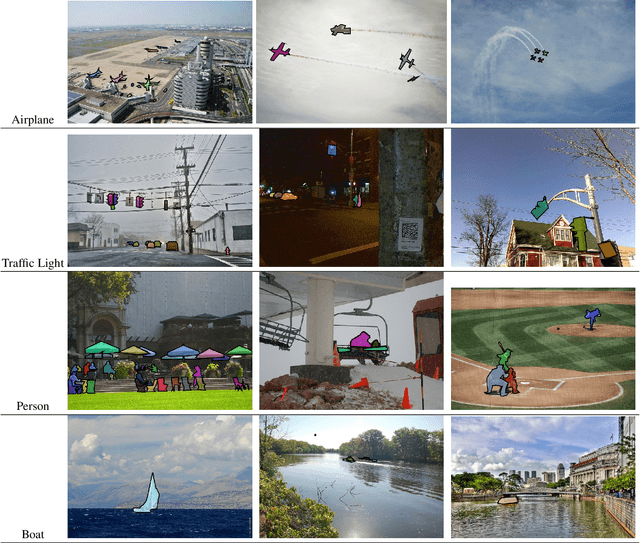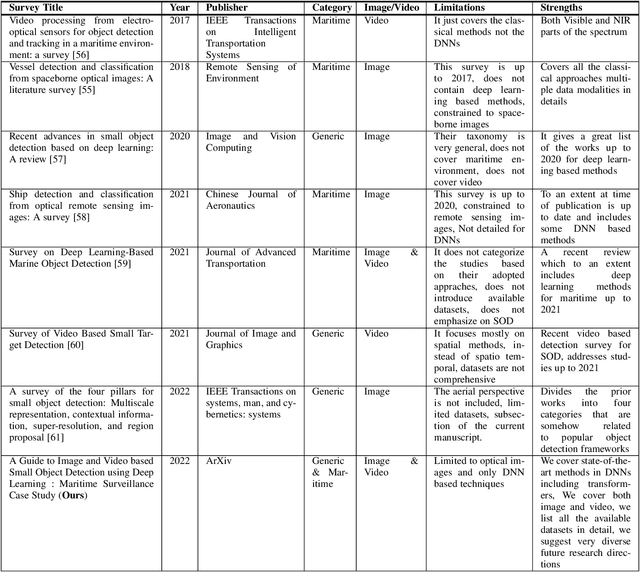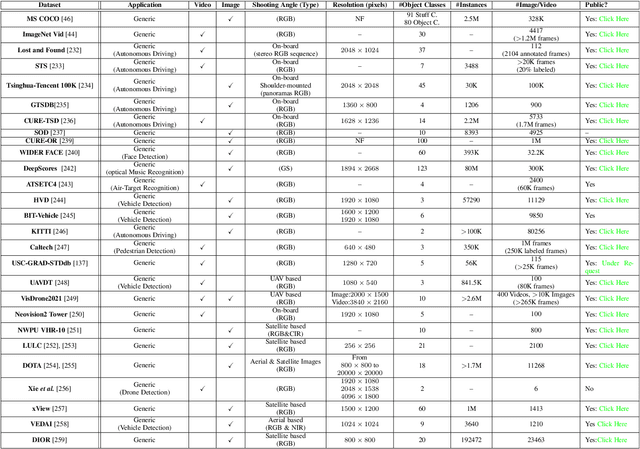Stephen Hoefs
Transformers in Small Object Detection: A Benchmark and Survey of State-of-the-Art
Sep 10, 2023



Abstract:Transformers have rapidly gained popularity in computer vision, especially in the field of object recognition and detection. Upon examining the outcomes of state-of-the-art object detection methods, we noticed that transformers consistently outperformed well-established CNN-based detectors in almost every video or image dataset. While transformer-based approaches remain at the forefront of small object detection (SOD) techniques, this paper aims to explore the performance benefits offered by such extensive networks and identify potential reasons for their SOD superiority. Small objects have been identified as one of the most challenging object types in detection frameworks due to their low visibility. We aim to investigate potential strategies that could enhance transformers' performance in SOD. This survey presents a taxonomy of over 60 research studies on developed transformers for the task of SOD, spanning the years 2020 to 2023. These studies encompass a variety of detection applications, including small object detection in generic images, aerial images, medical images, active millimeter images, underwater images, and videos. We also compile and present a list of 12 large-scale datasets suitable for SOD that were overlooked in previous studies and compare the performance of the reviewed studies using popular metrics such as mean Average Precision (mAP), Frames Per Second (FPS), number of parameters, and more. Researchers can keep track of newer studies on our web page, which is available at \url{https://github.com/arekavandi/Transformer-SOD}.
A Guide to Image and Video based Small Object Detection using Deep Learning : Case Study of Maritime Surveillance
Jul 26, 2022



Abstract:Small object detection (SOD) in optical images and videos is a challenging problem that even state-of-the-art generic object detection methods fail to accurately localize and identify such objects. Typically, small objects appear in real-world due to large camera-object distance. Because small objects occupy only a small area in the input image (e.g., less than 10%), the information extracted from such a small area is not always rich enough to support decision making. Multidisciplinary strategies are being developed by researchers working at the interface of deep learning and computer vision to enhance the performance of SOD deep learning based methods. In this paper, we provide a comprehensive review of over 160 research papers published between 2017 and 2022 in order to survey this growing subject. This paper summarizes the existing literature and provide a taxonomy that illustrates the broad picture of current research. We investigate how to improve the performance of small object detection in maritime environments, where increasing performance is critical. By establishing a connection between generic and maritime SOD research, future directions have been identified. In addition, the popular datasets that have been used for SOD for generic and maritime applications are discussed, and also well-known evaluation metrics for the state-of-the-art methods on some of the datasets are provided.
 Add to Chrome
Add to Chrome Add to Firefox
Add to Firefox Add to Edge
Add to Edge